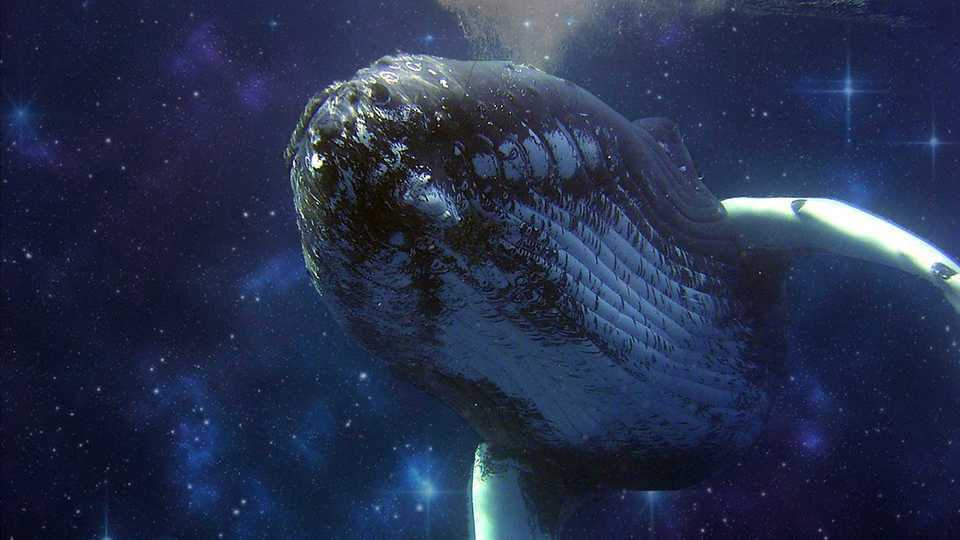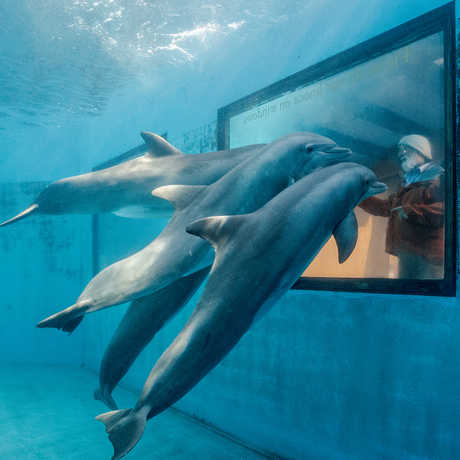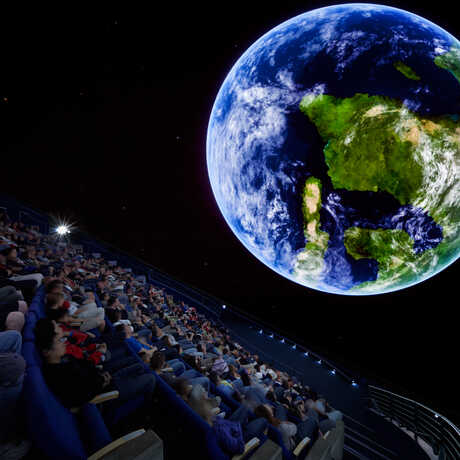Benjamin Dean Astronomy Lectures
Humpback Whale Song as an Intelligence Filter for SETI

Can studying whale communications help us figure out how to talk to ET?
Humpback Whale Song as an Intelligence Filter for SETI
Monday, December 2, 7:30 pm
Morrison Planetarium
Featuring Dr. Laurance Doyle, SETI Institute
We have been applying the mathematics of information theory—originally developed for human communication systems and computers—to humpback whales in order to measure the complexity of their vocalizations. Is their "language" as complex as ours, or even more complex? Are there general rules for communicating knowledge that even messages from extraterrestrial intelligence (ETI) will have to obey?
As astrobiology uses Antarctica as a proxy for Mars, so we are using non-human but complex communication systems as a proxy for an ETI signal if and when one may be received. Humpback whales grew up on the same planet, and around the same star, as humans did, but their communication systems are certainly not human! Thus we can deprovincialize our thinking and approach to the detection of intelligent life in space.
About Laurance Doyle

"When I was six," says Dr. Doyle, "my dad gave me a map of the Solar System and told me that the stars are other people’s suns. That was it for me -- I was never on Earth again. My love for space continued throughout my education. When asked to write an essay in second grade, mine was on the nine planets. When I was 10, I was teaching an astronomy class to the neighborhood kids every Tuesday night."
Doyle's first job was at the Jet Propulsion Laboratory as an imaging engineer, where he was in charge of analyzing pictures of Jupiter and Saturn sent from NASA's Voyager spacecraft. He moved to Heidelberg, Germany, where he received his Ph.D. in Physics, to help analyze images of Halley's Comet.
Long before the discovery of the first planet beyond our solar system, Doyle began theorizing about the habitability of planets around other stars, clarifying the conditions needed for a planet to bear life. In May 2005, he appeared on a National Geographic Channel special titled Extraterrestrial. He also appeared in The Science Channel series Morgan Freeman's Through the Wormhole.
From outer space to Earth's inner core, explore the universe from Morrison Planetarium's 75-foot digital dome.
